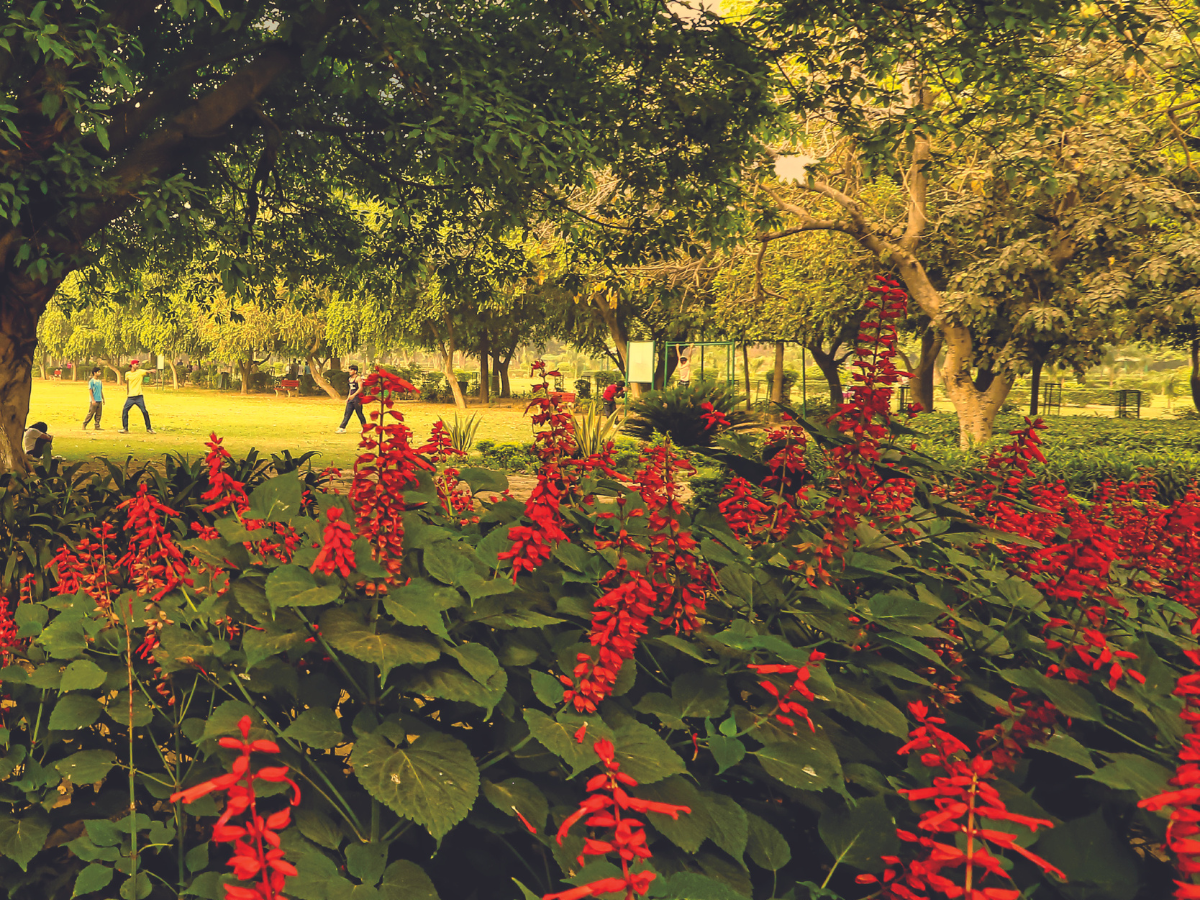Delhi is justifiably celebrated for its extensive green cover and numerous public gardens. Some of these gardens boast a rich history spanning several centuries, while others, though relatively new, are notable for their design, plant variety, or the stories behind their creation. All contribute to the unique character of Delhi, offering vital public spaces that provide a refuge from urban stress for residents and must-see attractions for visitors.
Inspired by the visual beauty and environmental importance of these green spaces, sisters Swapna Liddle, a historian, and Madhulika Liddle, an amateur naturalist, along with photographer Prabhas Roy, have documented these gardens in a recently released book.
Also read: Pay for box, not books
The launch was graced by eminent filmmaker, environmentalist, and author Pradip Krishen, along with historian, nature enthusiast, and author Bharati Jagannathan, at the India International Centre in New Delhi.
A joint effort
Swapna explains, “The book is truly a joint effort. We have featured both old and new gardens. Our criteria for inclusion were that it should be an existing public garden. This is why we included the Rashtrapati Bhavan’s Mughal Garden (Amrit Udyan) but not a monument such as Humayun’s Tomb. For example, a garden behind the town hall in what was then Shahjahanabad is not featured because it no longer exists as a garden.
“We also included very new gardens like Millennium Park, which emerged from public litigation on waste disposal, arguing that closed landfill sites should be developed as gardens. This book involved a lot of research. I went through old newspapers, national archives, and met people involved with Delhi’s history before I started the actual writing, which took a year. For instance, the book tells us about Delhi’s oldest garden, dating back to the 14th-century Tughlaq dynasty, a terraced garden whose remains can be seen in a DDA park, Vasant Udyan, at Vasant Vihar.”
Madhulika adds, “It was Pradip Krishen’s Trees of Delhi that sparked my interest in Delhi’s gardens. I read it from cover to cover. For three to four years, I took pictures of trees and posted them on my Facebook page, which generated a lot of interest. So, when my sister suggested I join her on this project, I immediately agreed.

“Even if you are a regular visitor to Delhi’s many gardens, this book can help you see them differently by providing insights into their history, landscape, and horticulture. For those who may not have visited these green spaces, ‘Gardens of Delhi’ is just the thing to tempt them or to provide entertainment and information to the armchair traveller.”
Walk through history
Madhulika describes the creation of the book as a pleasurable task since it involved multiple visits to many gardens and walks that she loved.
Referencing the book, Madhulika says, “One of the greenest cities in India, Delhi is marked by a number and variety of gardens. Many of these are historic, and all of them offer a chance for city-dwellers and visitors to spend some time with nature. ‘Gardens of Delhi’, inspired by the city’s gardens and green spaces, is designed to acquaint the reader with some of the major gardens of Delhi. From historic gardens like Shalimar Bagh and Qudsia Bagh to newer ones like Sunder Nursery and the Garden of Five Senses, this book discusses the history, flora, and ambiance of these gardens.”
Delhi’s gardens have borne witness to the city’s ebb and flow. Pradip Krishen, a leading authority on Delhi’s flora, remarks, “I like trees. A book like this will do a great service to the city by initiating a discussion on Delhi’s gardens. There is much to rethink about the way these gardens are planned. After all, Delhi has 18,000 parks, and there is a lack of ecological awareness in their planning.
“We need to focus on indigenous varieties of trees, shrubs, and flowering plants rather than those introduced by the British. We need to decolonise our thinking about gardens and address the problems and shortcomings in the city’s green cover. This book initiates a crucial debate about Delhi’s gardens and suggests a way forward to rethink these green spaces, which are the lungs of the city,” he adds.
Capturing the essence
For casual visitors, Bharati Jagannathan recommends taking the book along while exploring these gardens to enhance understanding and enjoyment. As a lifelong nature enthusiast and historian, she discovered many new things while reading this book.
One key observation from the nature lovers involved in its creation is that local varieties like Amaltas and Flame of the Forest should be prioritised over imported trees like the Jacaranda from Latin America. They emphasise preserving the city’s own ecology and rethinking the maintenance of large green lawns, a colonial legacy, especially in times of increasing water scarcity.
Commenting on the publication, Trisha Niyogi, COO of Niyogi Books, says, “Delhi is known for its beautiful gardens—some rich in history, others modern creations. They provide green spaces year-round, transform Delhi into a floral delight in spring, and offer places for all ages to reconnect with nature. We are delighted to offer Gardens of Delhi to both residents and visitors of our city.”
Photographer Prabhas Roy admits that parks and gardens initially seemed so commonplace that he was unsure what to capture. However, as he worked on the project, he realised each park and garden has a unique character.
Among the favourite gardens, Sundar Nursery emerges as the winner for its sheer diversity of horticulture and excellent landscaping. Green enthusiasts say there is always something new to discover on every visit.





